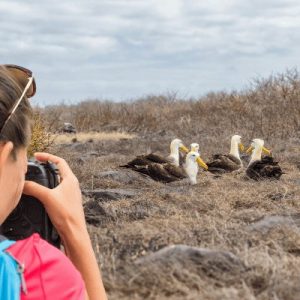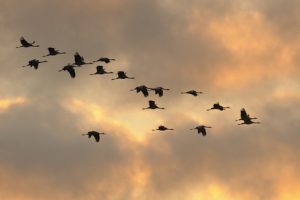Ornithology Diploma Level 3
- The Ornithology Course explores the scientific principles, behaviour and physiology behind many avian attributes.
- This comprehensive 3 module course enables learners to gain a fuller appreciation and understanding of the diversity of bird life.
- Learn about: Flight, learning & instinct, adaptations & techniques, sight & sound, classification & evolution, conservation & persecution, hunting & feeding, breeding & courtship, migration and avian biorhythms.
Ornithology is a type of biology involving the scientific study of every aspect of birds including flight & migration patterns, appearance, behaviour, classification and bird songs. Ornithology is a science (and one of the few remaining), where non professionals – amateur birders – are able to make significant contributions. This is particularly with regard to exploring where birds occur naturally; this is done through the contribution of sight records, and in the monitoring of change in bird populations and this is achieved through annual bird counts worldwide. Information gathered by ornithologists is used to better understand how birds function and how they relate to their environment as birds are good indicators of environmental health. This 12 module course is studied by distance learning, with full tutor support.
*You will have access to the course for 6 months only, after which, you can purchase extensions.
Unit 1
Avian Adaptations and the Mechanics of Flight
This unit looks at avian adaptations including the evolutionary adaptations that have occurred in hearing and vision, the mechanics of flight and the genetic and environmental factors that affect learning.
Learn about:
a) Avian adaptations focussing on flight, feather, muscle & bone along with the evolutionary lineage of birds.
b) The varying evolutionary adaptations that have occurred in avian hearing and vision and the relevance of such adaptations in the natural world.
c) The mechanics of avian flight, looking in particular at Hovering Flight, ‘Clapping the Wings’ and Air Vortices.
d) Avian instinct and learning. Investigating how avian learning is affected by many factors, both genetic and environmental.
Unit 2
Avian Classification, Evolution, Conservation and Hunting
This unit explores evolution and avian classification, taking a look at conservation techniques and examining the feeding habits of raptors and non-raptors.
Learn about:
a) How the evolutionary journeys and lines of evolution demonstrate vast diversity in the avian class. See how avian classification can bring a degree of order to the great variety we see before us.
b) The primary causes of decline in numbers in bird populations and how conservationists approach the task of protecting animal populations.
c) The diversity of feeding habits and techniques of the different bird species. Specifically looking into those of the raptors and the three orders they are classified into.
d) The hunting methods and feeding habits of the non-raptors. Explore the diversity in avian feeding methods, concentrating mainly on wildfowl, sea birds and common garden birds.
Unit 3
Avian Reproductive Systems, Migration and Biorhythms
This unit covers avian courtship and reproductive systems along with looking at migration methods and the biorhythms that influence bird behaviour.
Learn about:
a) Courtship and breeding techniques, making use of Darwin’s theories on species evolution.
b) The diversity of the avian breeding systems, looking in depth at the complexities of both monogamous and polygamous types of breeding strategy and the influence of environmental conditions.
c) Reasons for and methods of migration.
d) The two primary biorhythms that influence bird behaviour – circannual and circadian rhythms and how their functioning can be triggered by natural zeitgebers which influence internal detection mechanisms.
We offer a selection of accredited and employer recognised courses specifically designed for careers working with animals.
If you have any questions about our courses, please contact us.
We’ve assisted many people to achieve their goal to work with animals. Read more about our 5-star reviews and student success stories.
Gain relevant training to achieve your goal to work with animals.



